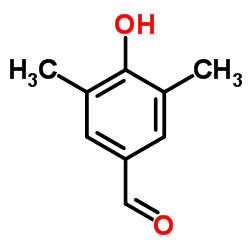| 结构式 | 名称/CAS号 | 全部文献 |
|---|---|---|
 |
3,5-二甲基-4-羟基苯甲醛
CAS:2233-18-3 |
| 结构式 | 名称/CAS号 | 全部文献 |
|---|---|---|
 |
3,5-二甲基-4-羟基苯甲醛
CAS:2233-18-3 |